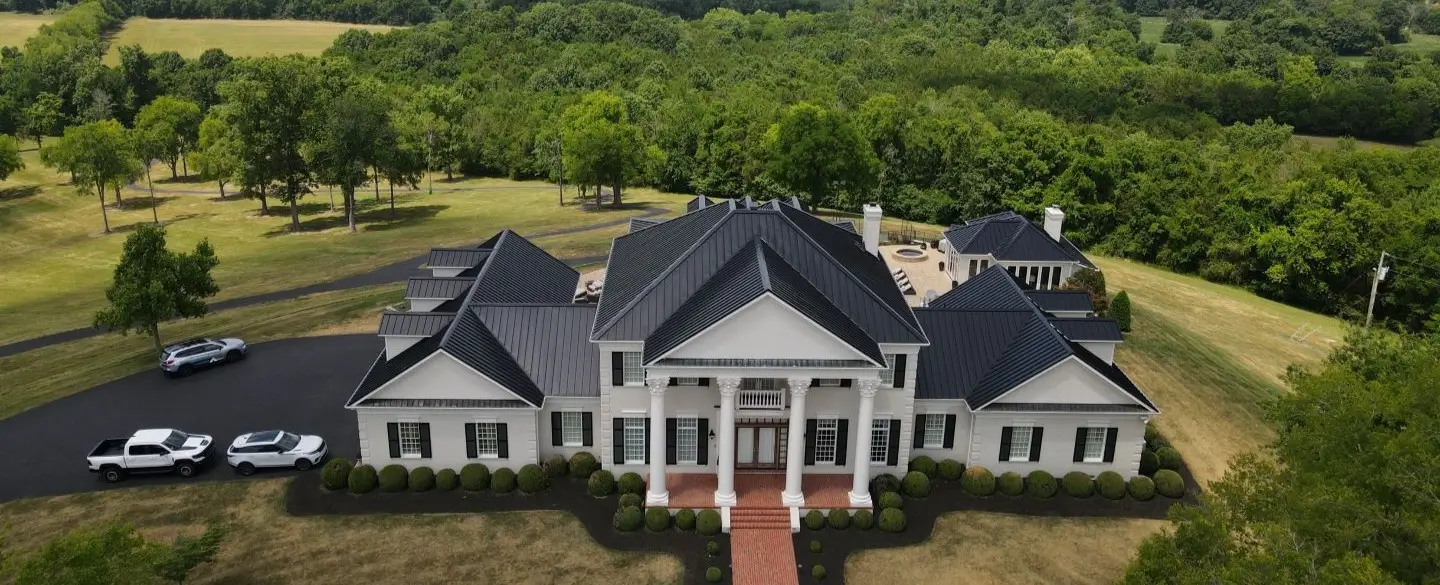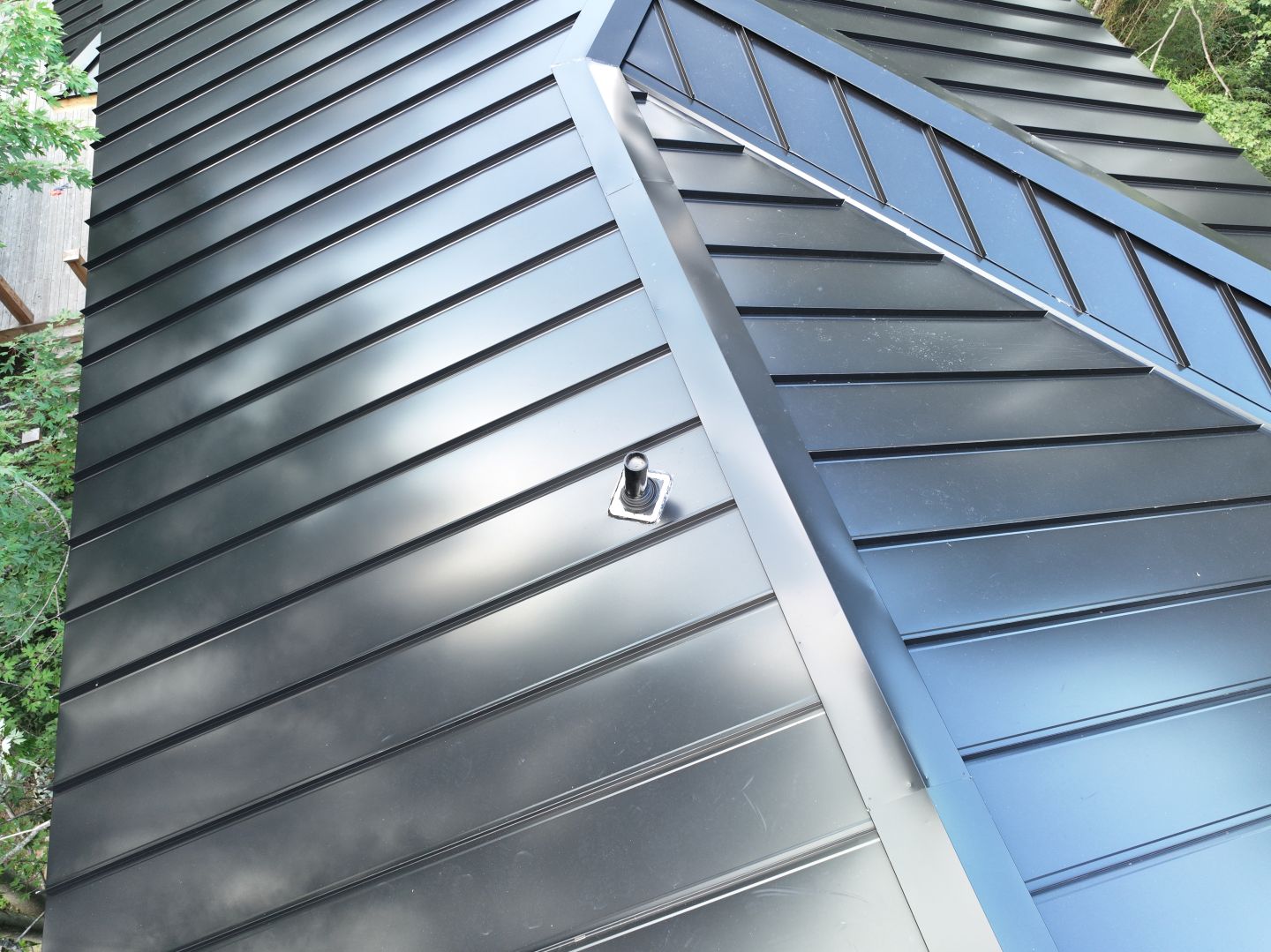Strip the old roof, inspect every square foot of decking, and solve structural or moisture issues before a single metal panel arrives
A standing-seam roof will last half a century or more only if it sits on a rock-solid foundation, so professional crews start by clearing the slate. All existing shingles, felt, nails, and vent boots come off, exposing raw decking from ridge to eave. Installers sweep the boards clean, then walk the surface with sledgehammer handles or moisture meters, listening for hollow thuds that signal delamination and probing for dark stains that betray slow leaks. Any spongy sections are cut back to solid lumber and replaced with matching thickness plywood or OSB, glued and ring-shank nailed to modern uplift codes. Once the sheathing is secure, carpenters drop into the attic to check whether older rafters show cracks, twisting, or pulled fasteners; they sister or re-nail framing where age has loosened connections, ensuring the new metal won’t telegraph movement below. At this stage the crew also verifies ventilation. If the existing soffit-to-ridge path is undersized—a common flaw on mid-century ranch homes—they will specify additional soffit vent strips or baffle paths, because a cool attic keeps condensation off the underside of the new standing-seam panels. Only when the wood is sound, the structure square, and airflow adequate does the foreman green-light the roof for water-barrier installation.
Get a quote >>>





































